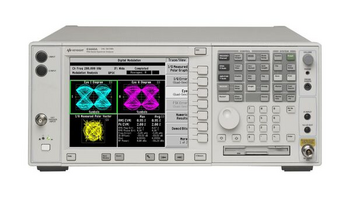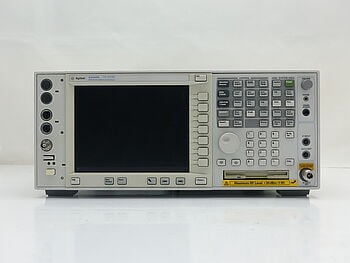How to Check Signal Strength Of All Available Network Operators
Have you ever found yourself troubleshooting a network issue only to realize the problem lies with weak signal strength, not the device itself?
As an engineer, you know the frustration when network performance drops due to signal issues—whether it's from poor coverage, interference, or device limitations. You need reliable data to pinpoint the root cause.
How do you ensure you're getting the full picture? How do you choose a tool that won't just meet expectations but exceeds them in different environments?
In this article, we will dive into the key factors you need to consider when measuring signal strength across various network operators and help you make informed decisions to maintain optimal connectivity.
Signal strength indicates the power level of a signal received by your device from a network, serving as a critical metric for assessing the quality of connectivity.
It's commonly measured in dBm (decibel-milliwatts), which represents the signal's absolute power, or in RSSI (Received Signal Strength Indicator), which provides a relative measure of signal quality.
While dBm offers precise numerical data, RSSI varies by device and network but still provides a useful gauge of performance. Both metrics are vital when diagnosing connectivity issues or optimizing network performance.

Accurate signal strength measurements are not just technical necessities—they are essential for optimizing network coverage, ensuring reliable communication, and identifying areas of poor performance before they impact critical operations.
Network operators rely on a variety of frequency bands to deliver services like voice calls, data transmission, and messaging. These frequency bands directly impact signal strength, coverage, and the quality of service you receive.
Lower frequency bands, such as those below 1 GHz, have better range and penetration through obstacles like walls, making them ideal for widespread coverage in urban and rural areas. In contrast, higher frequency bands, like those above 1 GHz, can carry more data but struggle with range and obstacles, limiting their coverage to more localized areas.
Different network operators use these frequency bands in distinct ways to optimize service in their regions.
For example, in the US, AT&T and Verizon commonly use the 700 MHz and 850 MHz bands for broad coverage, while they deploy higher bands like 1900 MHz or 2500 MHz for faster data speeds in dense areas.
In Europe, operators often rely on the 900 MHz and 1800 MHz bands for general coverage, with the 2600 MHz band being used for higher-speed LTE services in cities.
Understanding these frequency bands is essential when measuring signal strength, as devices designed to work on specific bands may perform better or worse depending on which frequencies are available in a given area. Knowing which bands your network operators use ensures your measurement tools and techniques are optimized for the real-world conditions your networks operate under.

Measuring signal strength accurately requires the right tools, ranging from simple smartphone apps to advanced spectrum analyzers. Each tool has its strengths and weaknesses, depending on the level of precision and detail you need. Below is an overview of different tools used to measure signal strength, along with their pros and cons.
| Tool | Features | Advantages | Disadvantages | Best For |
| Smartphone Apps | Measures basic signal strength (dBm) | Free/low cost, accessible, user-friendly | Limited accuracy, hardware-dependent | High cost, bulky, requires expertise |
| Handheld Meters | Measures signal strength across bands | Portable, more accurate, supports multiple bands | Moderate cost, limited frequency range | Field technicians, small projects |
| Spectrum Analyzers | Supports all frequency bands, detailed analysis | Extremely accurate, comprehensive data | High cost, bulky, requires expertise | Network engineers, large-scale projects |
Understanding how to accurately measure signal strength is crucial for optimizing network performance, diagnosing issues, and improving overall connectivity.
Whether you're using a smartphone app, a handheld meter, or a professional-grade analyzer, knowing the right steps can ensure that your measurements are both accurate and meaningful.
The following sections will guide you through various methods of measuring signal strength using different tools, from built-in smartphone features to advanced equipment.
Using your smartphone's built-in settings is a quick and easy way to check signal strength, though it lacks the precision needed for professional tasks. Despite this limitation, it can be useful for informal measurements in various locations.
*3001#12345#* and press the call button. This will open the Field Test mode, a hidden interface designed for technicians.Specialized apps provide more comprehensive signal strength data than smartphone settings. These apps are popular because they are relatively easy to use and offer features that surpass built-in tools.
Features and Benefits:
Handheld signal meters are dedicated devices designed for precise field measurements. They are more accurate than smartphones and apps and are often used by technicians to ensure reliable network performance.
Spectrum analyzers are powerful tools that allow for detailed analysis of the entire signal environment. They provide a visual representation of signal strength across various frequencies and are indispensable for identifying interference and optimizing signal performance.
Network analyzers, while often used for component testing, are valuable for measuring signal strength indirectly by analyzing network parameters such as return loss and insertion loss.
Oscilloscopes are versatile tools used to measure electrical signals, including signal amplitude, frequency, and waveform integrity. Although they are not specialized for signal strength measurement, they can be used to analyze signal quality in some applications.
By following these step-by-step instructions, you'll be able to measure signal strength effectively using a variety of tools, ensuring that you have the right data to optimize network performance and troubleshoot any issues.
Selecting the right tool for measuring signal strength depends on several factors, including the level of precision required, the application, and the environment.
If you’re conducting basic checks for coverage in an office or field setting, a smartphone app or handheld meter might suffice. However, for detailed network diagnostics or interference analysis, a professional spectrum analyzer or network analyzer is essential.
Consider the environment in which you’ll be working. Field technicians may prioritize portability and durability, while lab-based engineers might focus on advanced features and detailed analytics. Additionally, the level of precision required will dictate your choice—if accuracy is paramount, investing in a higher-grade instrument is necessary.
"Budgets are under pressure nowadays. 500k for a product can be a lot of money, discounts are very appreciated." - Keysight Account Manager
| Tool | New Price | Used Price | Precision Level | Best For |
| Smartphone Apps | $0 – $10 | N/A | Low | Casual checks, general users |
| Handheld Signal Meters | $500 – $3,000 | $300 – $1,500 | Medium | Field technicians, small projects |
| Spectrum Analyzers | $50,000 – $200,000+ | $20,000 – $80,000 | Very High | Network engineers, interference analysis |
| Network Analyzers | $75,000 – $250,000+ | $30,000 – $120,000 | Extremely High | Detailed component testing |
Choosing used or refurbished equipment balances cost, quality, and speed, making it a smart choice for budget-conscious professionals who still need premium performance.

Obtaining accurate and reliable signal strength measurements is crucial for diagnosing network issues, optimizing performance, and ensuring consistent connectivity. Here are some best practices to help you achieve precise results.
By following these best practices, you’ll ensure that your signal strength measurements are both accurate and consistent, leading to more reliable network performance assessments and troubleshooting.
Signal strength measurement plays a critical role in various real-world applications, allowing engineers and technicians to maintain and optimize network performance. Below are some key scenarios where accurate signal strength measurement is essential.
By applying signal strength measurement in these scenarios, engineers can significantly improve network performance, leading to more reliable, efficient, and high-quality communication systems.

Signal strength data provides valuable insights that help engineers make informed decisions to improve network performance and coverage. By interpreting this data effectively, network infrastructure can be optimized for better signal strength, reduced interference, and increased reliability. Here’s how to use signal strength data to guide improvements:
By leveraging signal strength data, you can fine-tune your network to address weak spots, enhance coverage, and ensure a consistently strong performance across your infrastructure. These optimizations lead to better reliability, higher user satisfaction, and more efficient use of network resources.
Struggling with weak signals, dropped calls, or unreliable network performance? Accurate signal strength measurements are the key to diagnosing these issues and optimizing your network.
When you use the right tools—whether it’s a smartphone app for quick checks, handheld meters for field measurements, or advanced analyzers for detailed diagnostics—you can make informed decisions that improve signal quality, reduce interference, and enhance overall coverage.
With our premium used equipment, you don’t have to compromise on quality or wait months for new devices. Our refurbished products provide reliable, precise measurements at a more affordable price, helping you solve network issues faster and more efficiently. Improve your network's performance today with our high-quality premium used tools.
In order to use this feature, you need to enable notifications.
Manage notification preferences